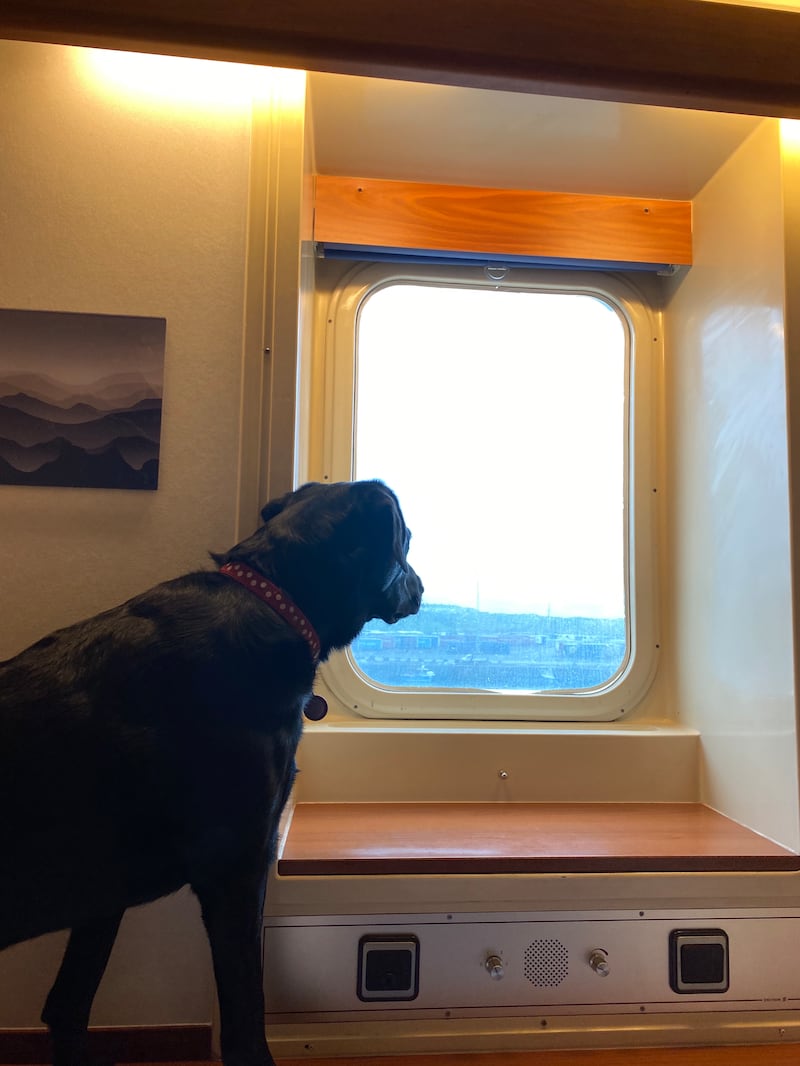The whole point of the trip was to take the dog on holiday. Not that she needed one; our pampered fur baby spends her days sleeping on the couch and regularly presenting her belly for tummy rubs. But this summer, Stena Line announced 42 new pet cabins aboard Stena Vision sailing from Rosslare to Cherbourg and we just wanted to find out how easy it would be to take her abroad and save on the cost of a dog minder.
Luna, our black Labrador, is a very good traveller. She loves the car and will happily sit in the back – sleeping mostly but occasionally staring out the window at the world around her. We weren’t that worried how she’d be on the ferry either: it’s 19 hours from Rosslare to Cherbourg, but the fact that she was allowed in the cabin was the game-changer as we couldn’t bear the thought of leaving her that long in an on-board kennel, even with regular toilet breaks.
What we did discover, though, is that Luna is very fussy about where she’ll excuse herself. The designated dog deck just wasn’t for her: she was happy to play and sniff with other dogs she met there, but no way was she going to use it to relieve herself. Her toilet strike caused us some consternation and we kept rushing back from wherever we were on board (the restaurant, the bar and, in my wife’s case, the spa) to see if she’d go, but there was nothing doing.
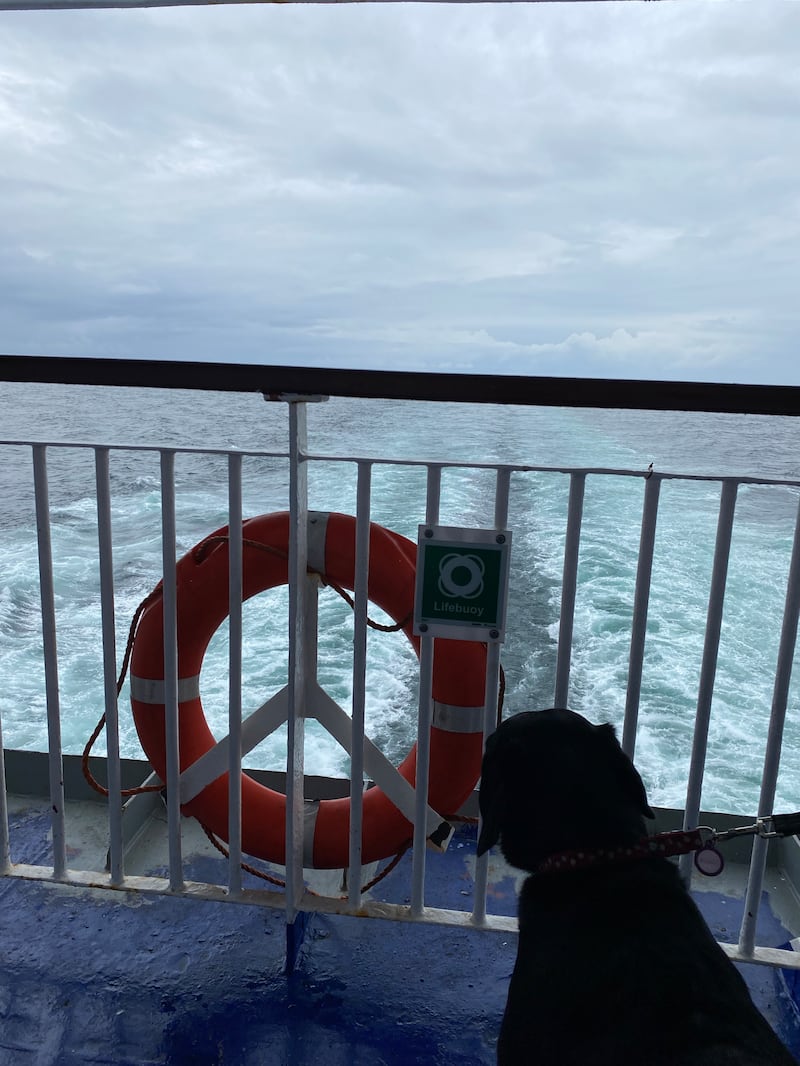
A whole paragraph about a dog’s toilet habits might seem a bit excessive, but figuring out how best to take care of Luna was top of mind throughout the entire time in France, beginning with our accommodation. We had booked a dog-friendly gîte just outside Bricquebec, a town I’d never heard of about a 30-minute drive from Cherbourg.
READ MORE
As it happens, both the gîte and the town were great choices: La Becterie (€80 per night for a twin/double in high season; la-becterie.com) was an old farmhouse with large stone walls, a pasture and a large woodland where Luna played with the owner’s Alaskan Malamute, Snow; and Bricquebec is a handsome spot built around a medieval castle that saw plenty of action during the Hundred Years’ War. Plus the town was blissfully free of mass tourism, which made it even nicer to explore.
What was less wonderful was the weather. With the exception of one day, it rained almost continuously for the entirety of our stay, which added a whole new dimension to trying to figure out what to do with a dog who, at the first sight of rain, drives her front paws into the ground and refuses to budge.
So we spent a chunk of our time just driving around the Cotentin peninsula. Bricquebec is only a 20-minute drive from Utah Beach, the Allies’ right (western) flank on D-Day, a 5km stretch of golden sand near the village of La Madeleine. Although I have never been a big second World War buff, I loved Band of Brothers and the cluster of related sites (including the mightily impressive Landing Beach Museum, where the story of the landings is told in 10 interactive exhibits) around the beach’s main entrance was quite arresting. Plus, the beach itself is great for long dog walks – even in the rain – although Luna wasn’t as enthused as we were.
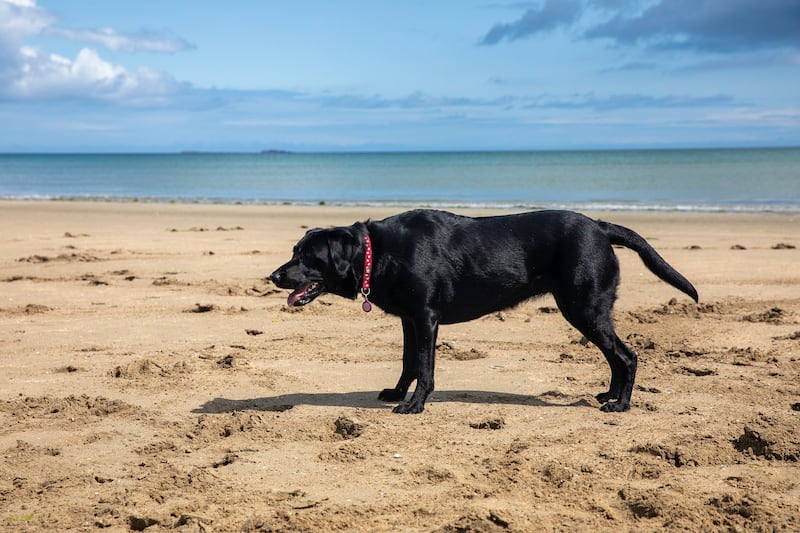
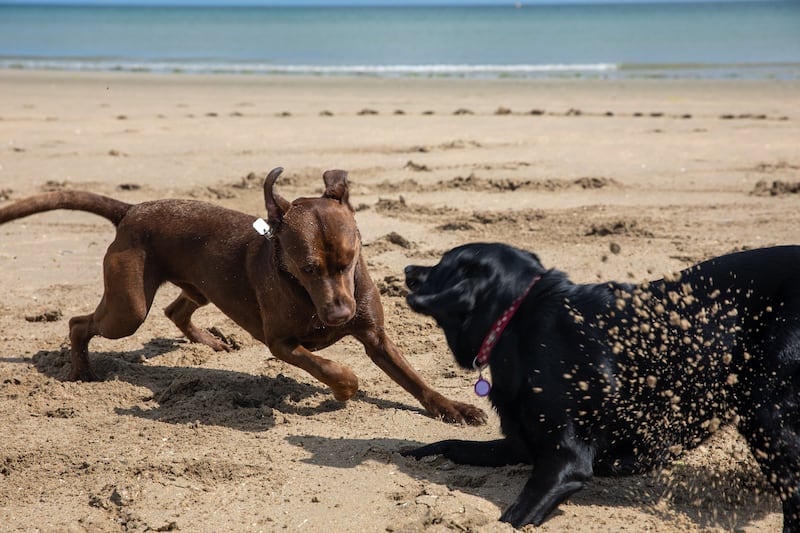
We were even more taken by Sainte-Marie-du-Mont, 4km inland from Utah Beach. This tiny village seems barely to have changed since 1944, when US paratroopers engaged German troops stationed around the village. Panels around the church square illustrate the events of June 6th in detail, making the whole experience feel very much like living history.
Sainte-Marie-du-Mont gets far fewer visitors than Sainte-Mère-Église, only a few kilometres away, another town that played a key role on D-Day. On the night of June 5th, 1944, paratrooper John Steele of the 82nd Airborne dropped into the village, only for his parachute to get stuck on the church steeple. He hung there for a couple of hours, pretending to be dead so the Germans in the square wouldn’t shoot him. He was eventually captured but escaped almost immediately and rejoined his unit.
The whole town is given over to D-Day tourism and includes the excellent Airborne Museum, which follows the fortunes of the 82nd and 101st Airborne in digitally interactive detail, from their training in England right through to the battles of the Normandy landings. But the most eye-catching sight is the effigy of John Steele, complete with parachute, dangling from the church steeple.
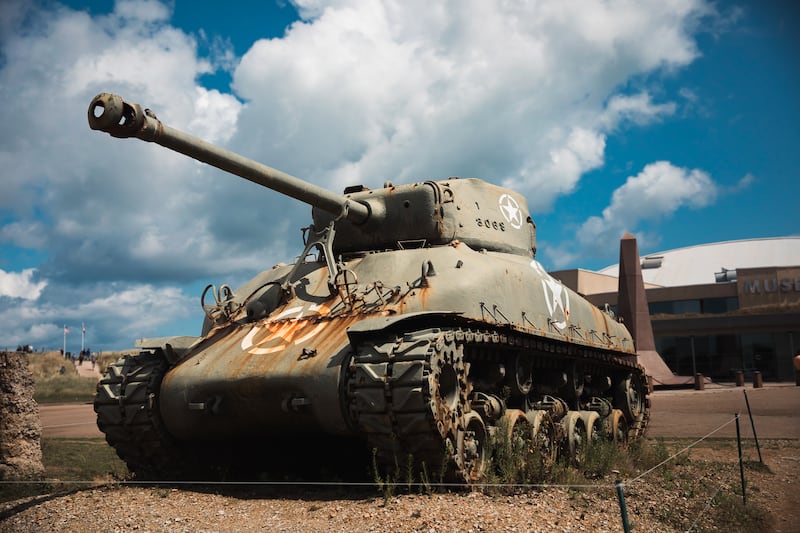
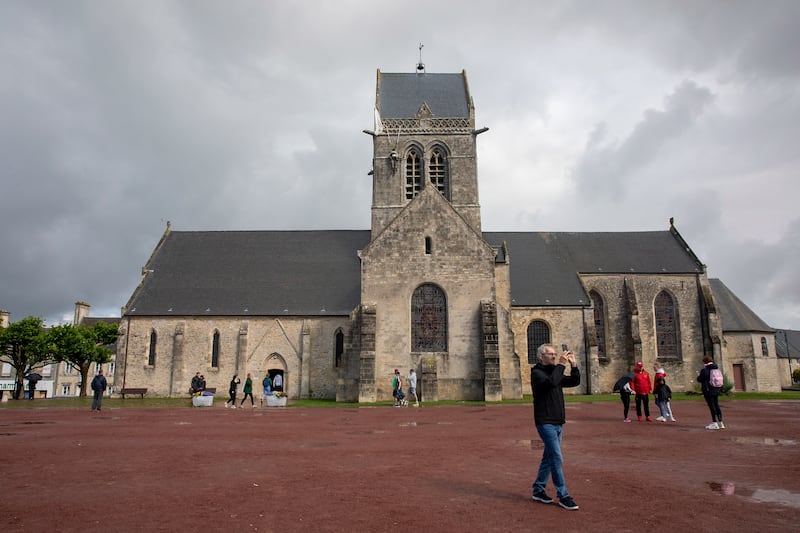
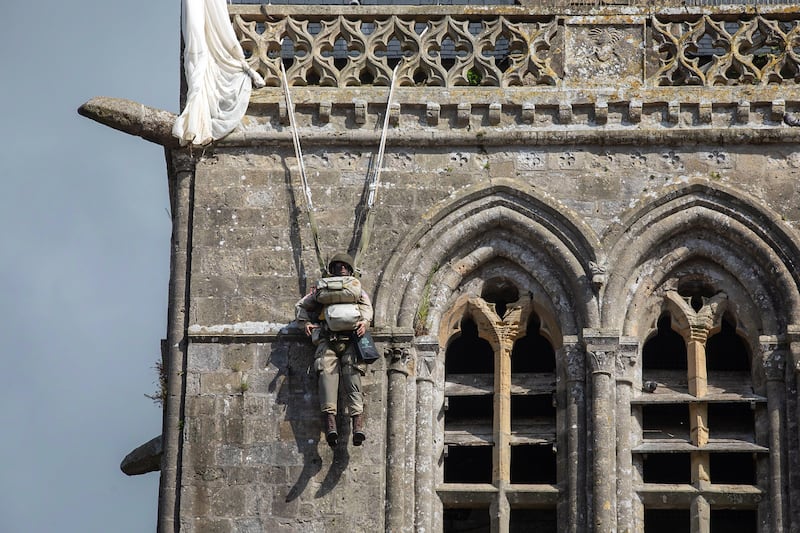
If the weather wasn’t helping us make the most of a dog-friendly holiday, locals were far more accommodating. Perhaps it’s because so many Irish restaurants have a strict no-pet policy, but we were genuinely surprised at how welcoming almost every restaurant was when we showed up with a Labrador and no reservation. “Pas de problème,” the owner would say and before we knew it Luna was being feted with dog treats and a water bowl.
Wasn’t that way everywhere, though: one of the guests in our gîte declared that she was afraid of black dogs, which meant that Luna wasn’t welcome in the public areas and was either confined to our room or – when the rain stopped – the gardens.
On the second-last day of our holiday, the rain disappeared and the sun finally made an appearance. We went back to Utah Beach for a proper walk, where we met a German couple and their dog: as the two chased each other around the sand, we talked about the joys of camper van travel (they had driven from eastern Germany and were dedicating a week to the Cotentin Peninsula), travelling with pets (limiting if you don’t know how to plan properly but ultimately rewarding; they loved it but my wife and I were still in the not having planned properly phase) and the emotional impact of the memorials (”very powerful” was the consensus).
The gîte owner, Mathieu, had also recommended two other beaches. Sciotot is a family-friendly beach about a 20-minute drive west of Bricquebec that is popular with both locals and French holidaymakers; dogs are welcome only outside of the summer season – or in the evenings when everyone has gone home. So every day around 6pm we showed up and let Luna wear herself out running around while we watched the setting sun.
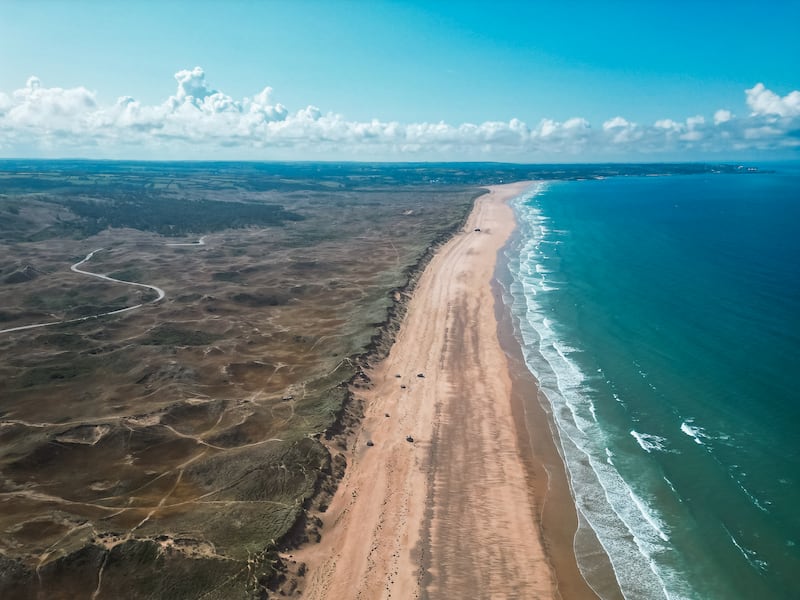
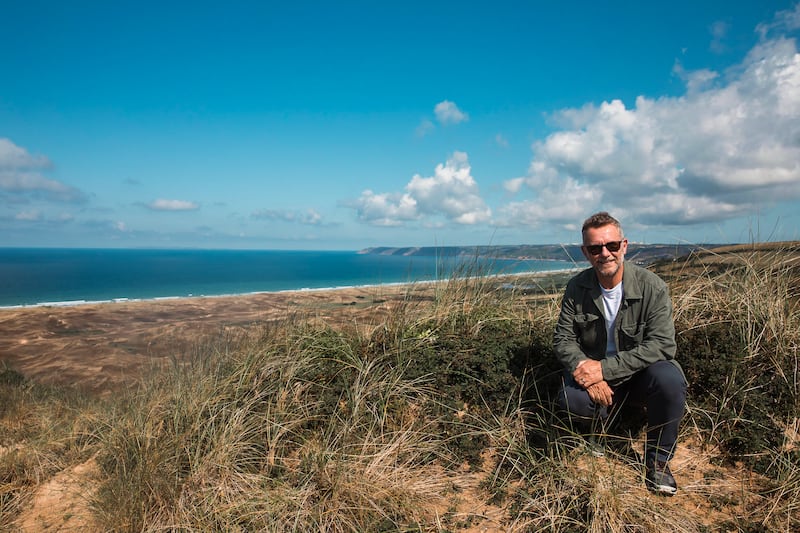
The other beach was a trip highlight. At the northwestern tip of the peninsula is the small town of Biville. From the church car park, it’s a short walk to one of the most spectacular set of dunes in Europe. Until 2014, the whole area – covering about 200 hectares – was occupied by the French Army, but is now a nature reserve: trails cut through the marram grass lead down to a stunning beach on which are the remains of a second World War tank and bunker.
Returning back to Ireland with Luna was a cinch. Gone are the days of animal quarantine; instead, all Luna required (along with her EU pet passport) was a pill for tapeworm administered by a local vet. A quick Google search and we found one on the edge of Bricquebec, who had us in and out in less than 15 minutes at a cost of €34.
“There are more vets in Bricquebec than dentists,” said Mathieu when I waxed lyrical about how easy the whole process was. “Which is good for dog owners. Not so good when you have a sore tooth.”
Rosslare to Cherbourg on the Stena Vision costs €229 each way for one driver with one car, additional passengers €50 each. A pet-friendly four-berth cabin is €135. stenaline.ie
